Fugitive Codebreaker and Rakdos Prowess
A new trophy list, some thoughts on relative card evaluation, and some thoughts on cantrips
I thought I was all set on the article I wanted to write about my initial Markov Manor testing. It was going to be called “Is Case of the Crimson Pulse Lurrus 2.0?” I may still write that, but in testing brews for it I tried out Fugitive Codebreaker in one…and well I haven’t looked back.
I’ve tested Rakdos, Izzet, and Boros Codebreaker decks. Most were 4-1s and felt strong. Once I started playing with Codebreaker, the brew ideas didn’t stop: I have something like 15 different Codebreaker decks written up in my phone to test, across all 4 color pairs and mono-red versions.
A key thing I look for when brewing with a new card is do my decks keep getting better as I brew with the card, which is an indication of unlocked potential. This is exactly what is going on here as my decks started strong and have been straight line improving from there.
With this steady improvement I got a trophy with a Rakdos Prowess version yesterday and the deck feels extremely strong, while still having some clear room for improvement. In this article I’ll go into what makes Codebreaker so good and then breakdown the Rakdos deck.
Fugitive Codebreaker
This was a card that was barely on my radar with the release of MKM. It certainly did not make my top cards list. To help understand what makes it good I’ll break down what I got wrong in my reasoning for I dismissing it.
Two-Mana Prowess Duds
There is a long line cards that get people excited for in the “two-mana” slot in Prowess and ultimately disappoint: cards like Khenra Spellspear, Balmor Battlemage Captain, Electrostatic Infantry, Sprite Dragon. Of these Sprite Dragon is still likely the best.
A 2/1 Haste Prowess is likely better than all of these except Sprite Dragon. Haste is huge for a Prowess deck where you are the aggressive deck and once your opponent has mostly stabilized, haste can be the difference between “burning out” your opponent for the final damage and losing.
Or just think about how much better Monastery Swiftspear is than Soul-Scar Mage. Haste is huge!
Haste is particularly relevant because of Kumano Faces Kakkazan being one of the best cards in the deck. Being able to curve Kumano into Codebreaker as a 3/2 haste puts an amazing amount of pressure on the opponent. Pairing Kumano with haste creatures essentially turns it into dealing 2 damage instead of one which is a big deal for an aggressive deck.
Much of this can be said about Sprite Dragon, but Codebreaker has two huge advantages over Sprite Dragon. First is being mono-colored it allows you color flexibility. As I mentioned above, my best deck is a Rakdos Deck.
Even in Izzet decks this is a huge advantage because it allows you to play a base Red version that allows you to run more utility lands and more reliably play your two drop on two.
But there’s more! That was all the two mana 2/1 haste prowess part of the card. There is also the Disguise part.
Bedlam Reveler
Probably the biggest reason I missed on Fugitive Codebreaker is I saw it being referenced as a Bedlam Reveler. And Bedlam Reveler has never been playable in Pioneer.
However, Codebreaker is not at all like Bedlam Reveler. Bedlam Reveler is weak because it is a card that cannot be played on curve/early in an aggressive deck. Aggro decks lose by not curving out, so adding a card that doesn’t allow you curve out is a recipe for losing.
Codebreaker in contrast is primarily played on 2 or on 3 while paired with a non-creature spell to trigger prowess. Bedlam Reveler is never played on 2 or 3.
But that does not mean the discard draw 3 text on Codebreaker is irrelevant. It is huge at preventing your opponent from stabilizing because they may have stabilized at 6 life, but late game drawing three cards on a haste threat, in a deck full of haste cards and burn, allows you to reliably finish off the remaining damage.
Lessons in Relative Card Evaluation
This is a good lesson in the dangers of Relative Card Evaluation. There are so many Magic cards in existence that the way we all evaluate new Magic cards is by comparing them to similar existing Magic cards.
This is what you should do and is a great approach for making quick, accurate evaluations. However, it is has weaknesses, specifically it anchors you on the existing cards you are familiar with and can blind you to what is different about the new card.
Clearly above I was overly anchored on the two mana prowess creatures and Bedlam Reveler all of which aren’t Pioneer playable, so I assumed Codebreaker would also not be playable.
I have two ways I try and fight this anchoring in my Brewing.
View from a clear-eyed achievable best-case scenario lens
That was a kind of long way of saying you want to compliment Relative Card Evaluation by trying to do the opposite. Try and look at the card on its own without considering other cards and see it clearly as it is on its own merits, not as a reflection of other cards you have experience with (given how our brains work, far easier said than done).
In doing this you also want to be reading the card in its best light (i.e. how it might read in a deck built around it for it to shine its brightest).
When you do that with Codebreaker the card reads like:
1R
2/1 Prowess Haste
Kicker 2: Draw 3 cards
That is an amazing card. If I had just read it like that instead of thinking of Bedlam Reveler and Electrostatic Infantry I would have had it as my number one card on my top cards list.
Play a wide range of cards
The other and even more powerful way to address this anchoring to existing cards, is to adjust your brewing process to compensate. This means, if there is a card that is on the fringe of what you think might be playable, but probably is not, you should give it a try.
This is in many ways the main thesis of this blog and why I called it “What If Brews” and not “I Definitely Know the Right Answer Ex-Ante Brews”. To find the best stuff you have to be willing to try stuff that will likely not work out. Or like I put it in this post:
This is something important to always remember as a Spike Brewer, Being Right and Being Wrong are only opposites in a situation with binary or symmetric outcomes. But with brewing the cost to being wrong is tiny, but there is huge value in being right (the 80% winrate you can get with a good brew and the satisfaction and that comes with putting a new deck on the map, winning a big tournament with your own brew, getting a card banned, etc).
So with brewing your goal is to maximize being very right, not minimize being wrong. Worrying about minimizing being wrong can even prove costly by reducing the range of ideas you consider.
Fortunately, I took this principal to heart here and gave Codebreaker a try in the first deck concept I had that seemed like a reasonable fit for it. I did this even though I expected it to look anemic in a deck with Bloodtithe Harvester next to it in the two drop slot. But sometimes a card surprises you and the next version of the deck had cut the Harvesters to focus more on the Codebreakers.
Rakdos Prowess
Here is the list I trophied with:
Why Rakdos?
We traditionally think of Prowess as an Izzet deck- pairing the Prowess creatures with Blue cantrips to maintain deck velocity while your creatures grow.
The problem with that approach is that I am coming to realize cantrips are by and large bad. If a one mana cantrip is not affecting the board, it is essentially the equivalent of running a tapped land and Pioneer is fast enough that is quite unforgiving to tapped lands unless you have a bunch of wraths.
From this lens Consider is the only good one mana blue cantrip because adding a card to the graveyard can be translated into mana advantage in Pioneer, and mana advantage does affect the board.
It is to the point that I am now thinking about trying Phoenix without Opt and Sleight of Hand and similarly revisiting Sultai Prowess with Consider as the only cantrip.
But where does that leave us with Codebreaker. The Prowess package of Swiftspear, Soul-Scar, and Codebreaker allows us to be base red and if we are only playing Blue for Consider and counterspells in the board, that points to it being worth considering other colors (note Izzet is still worth testing, Consider is that strong, it is more that it is not obviously the best home).
So pulling back to first principles, Prowess decks want one mana non-creature spells. The two best one mana non-creature spells in the format are Fatal Push and Thoughtseize. So from that lens Rakdos seems like an obvious pairing.
With Thoughtsize and Push, your ability to grind goes up a bit, so we want to make sure there is enough efficient card advantage to avoid running out of gas. Codebreaker provides a chunk of this, but I want at least one more card in this role. I do not want to be in the situation where I am hesitant to play Codebreaker on curve because I feel the need to save it for value.
That’s where Hearth Elemental comes in as a second source of efficient advantage and I have been overall impressed with how it plays, especially with all of the sources of trample in the deck.
There are certainly other directions to go for this card advantage. I have tested with Case of Crimson Pulse (which started me on this Codebreaker journey) and I have lists drawn up that use one of Robber of the Rich or Lord Skitter’s Blessing.
Beyond that it is a lot of the one mana spells you would likely expect. Special shoutout to Monstrous Rage, which is easily one of the most powerful cards in Pioneer and a true all star in the deck for finishing off the game fast.
Having Duress in the board is huge as a way to prevent interaction while advancing your plan. Going turn 1 Kumano, into Turn 2 Swiftspear + Duress taking their Temporary Lockdown is a recipe for beating control.
Rakdos Prowess looking ahead
The set just came out, so my testing is obviously limited. I am also playing against a lot of people who are also experimenting with new decks and new cards. Given those caveats, my initial impressions are this is one of the most powerful decks I have brewed.
It is aggressive, disruptive, high velocity, and doesn’t run out of gas, which is my ideal combo in brewing because if the balance is right that combo can give you game against everything. The Pioneer Pro Tour is coming up in a couple weeks, if I was playing in it I would be focusing on optimizing this Rakdos Prowess list.
There is some clear room here to improve. I am not positive on the right number of lands and Spikefields. The Claim/Fame was bad. I am not convinced by Ancestral Anger. There is room to better maximize Hearth Elemental and more reliably flip Codebreaker. There are other cards to test, like the other value engines I mention and…I mean I should at least try Fable.
And then there are the Mono-Red, Boros, Izzet, Gruul versions all which can bring their own flavor. On top of this, the meta is still in flux with the new set, so as the meta consolidates there will be work to optimize to a clearer meta.
Fugitive Codebreaker is one of the most exciting brewing cards we’ve had and there is still lots of room to explore to unlock its full potential.



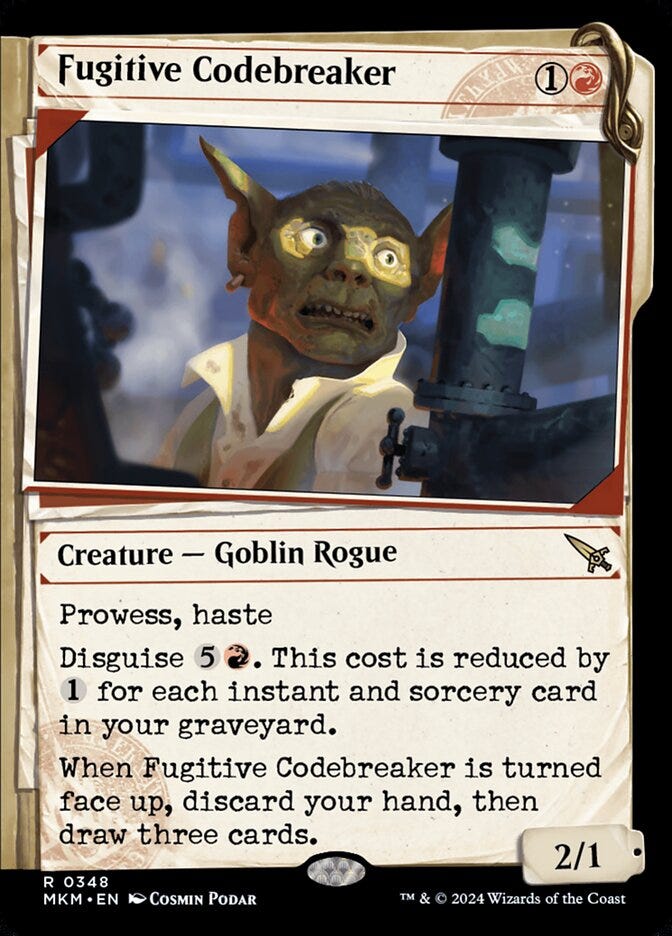

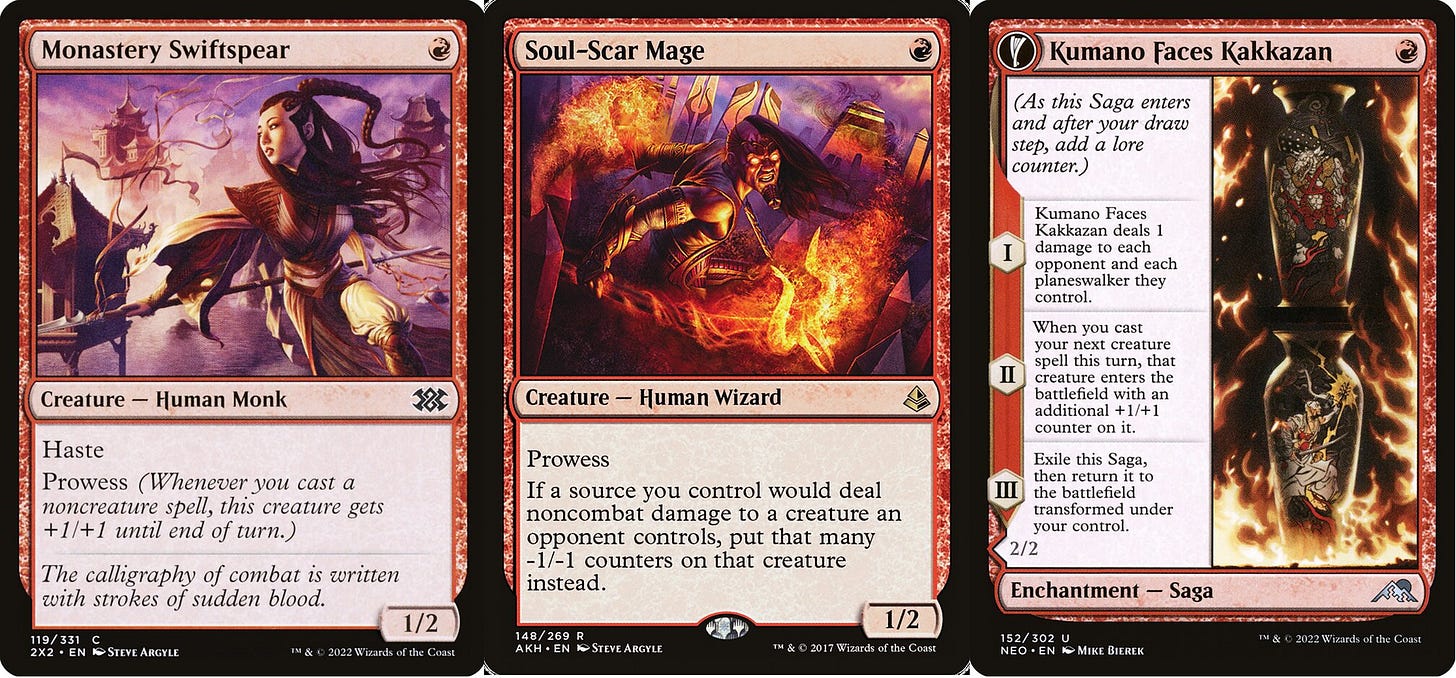
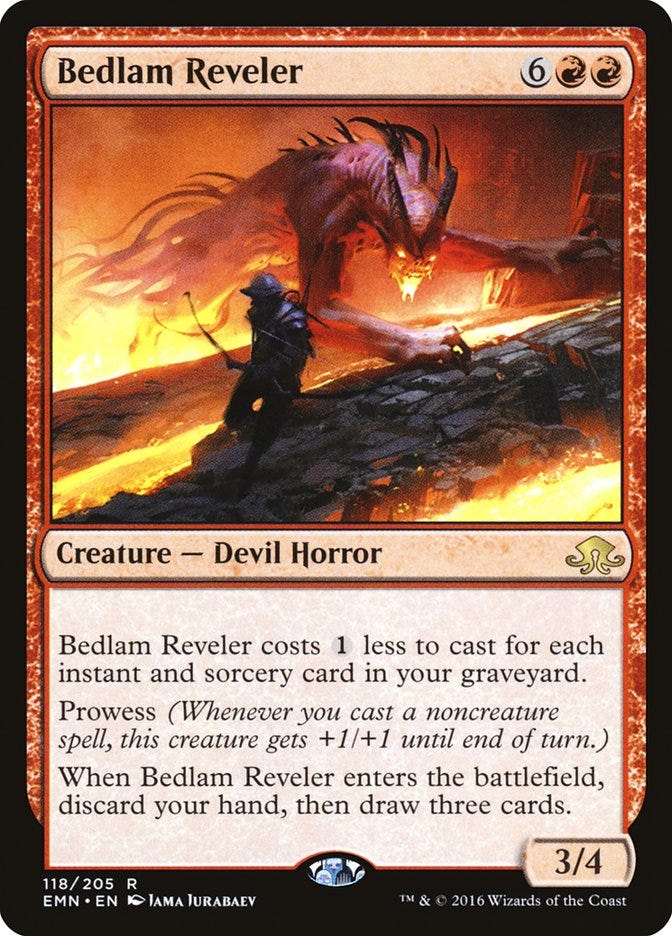

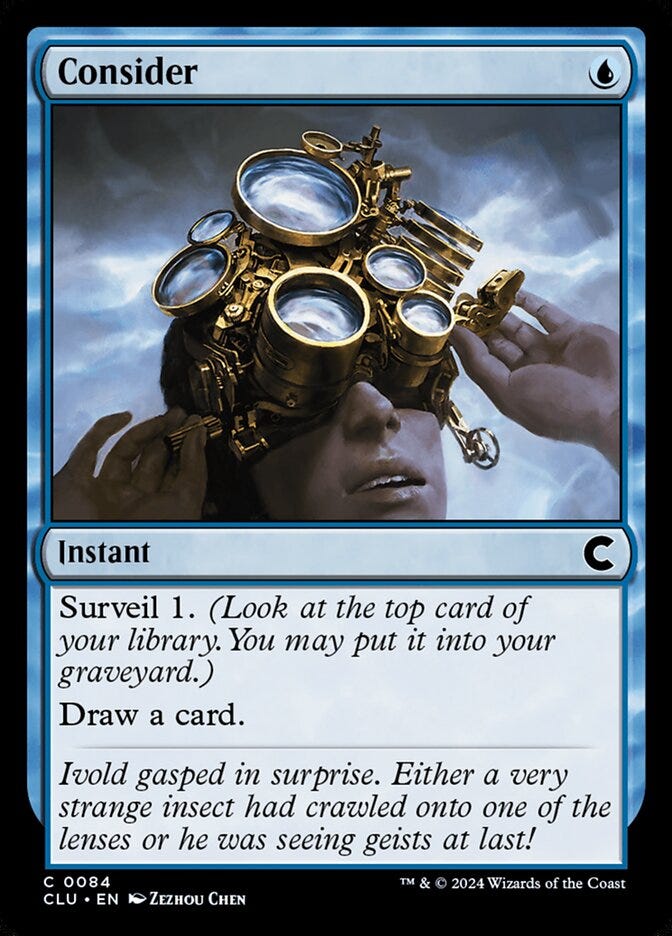

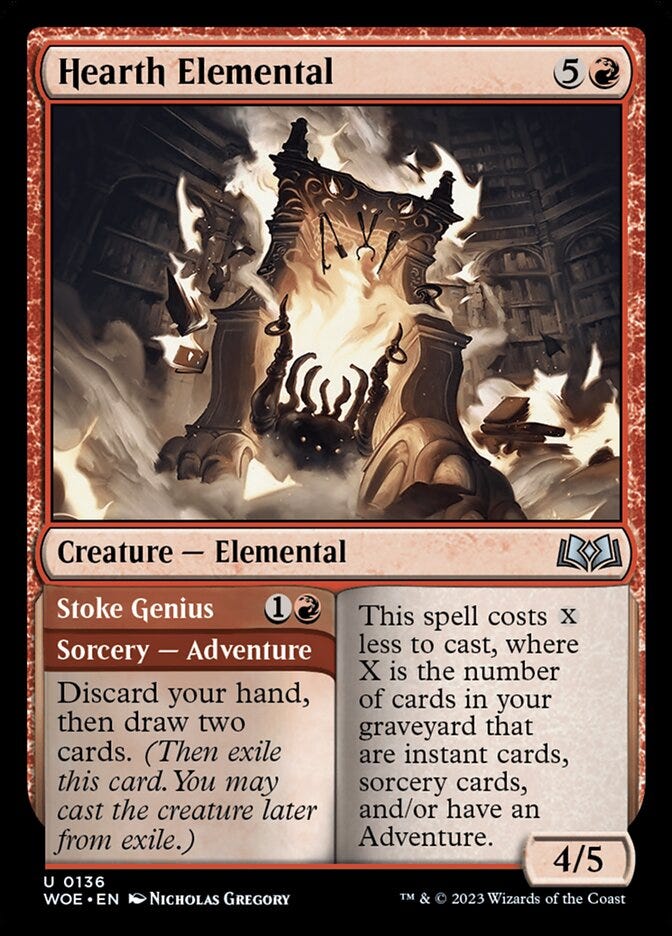

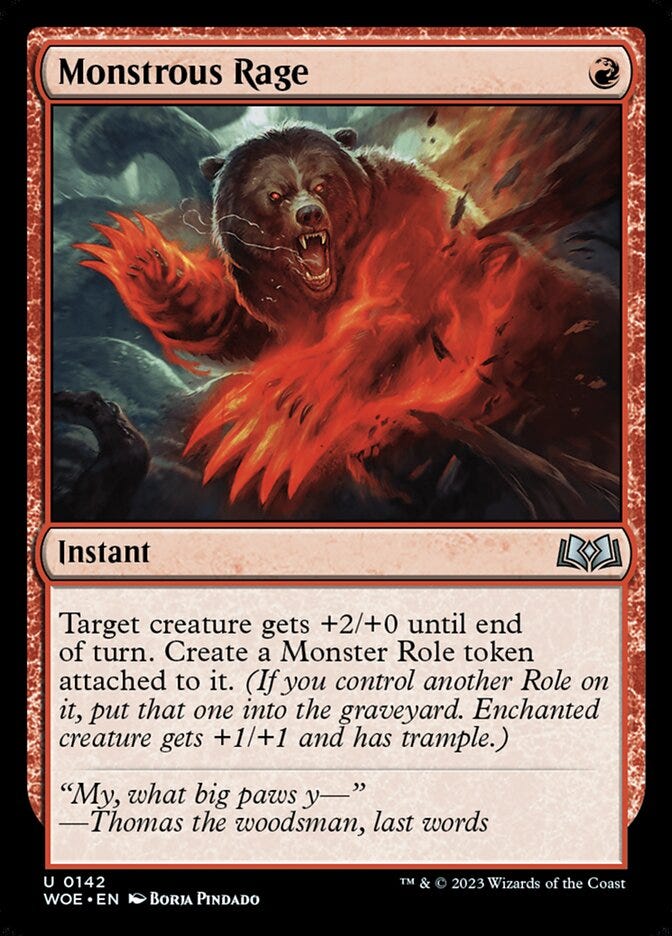
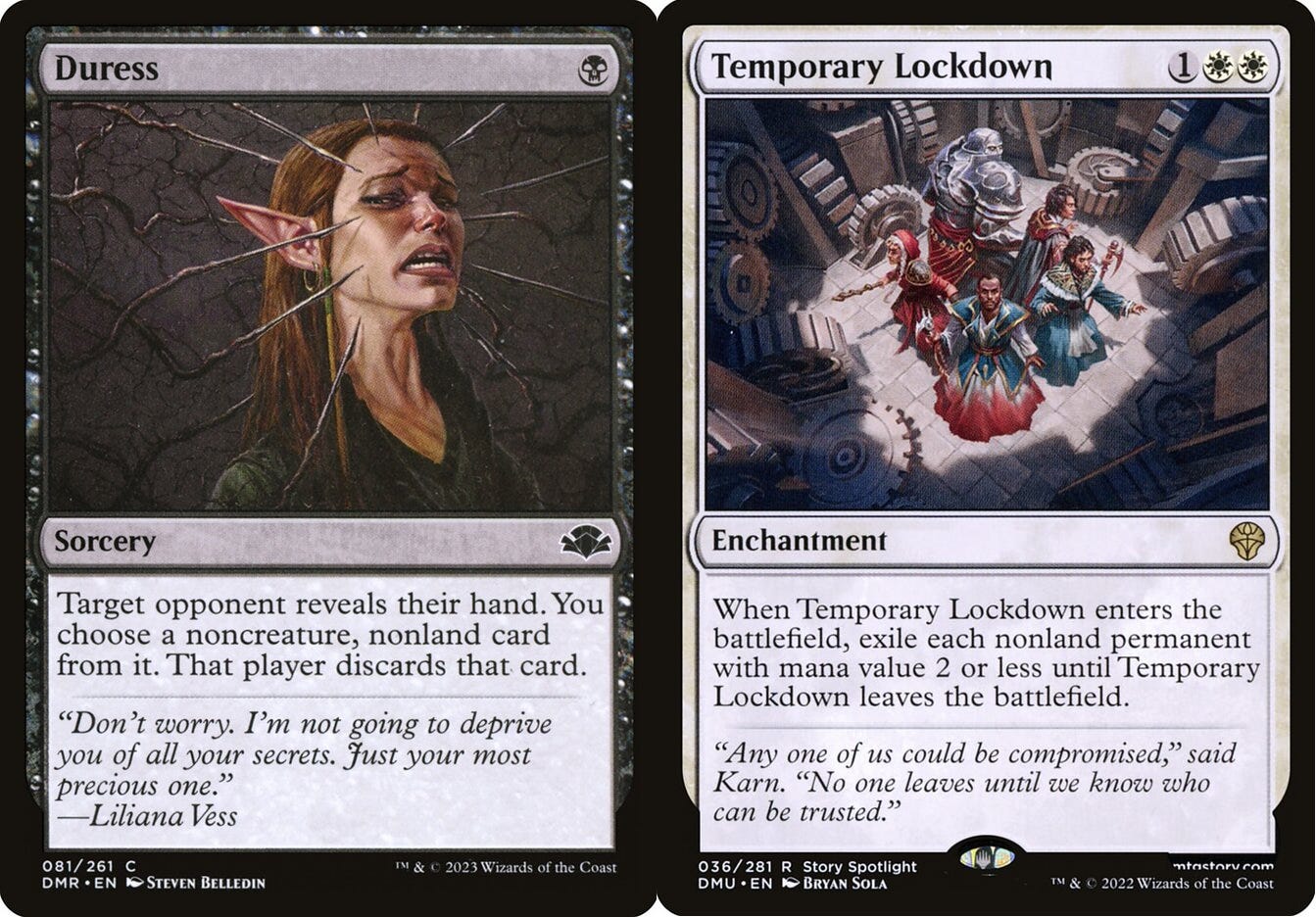
Have any thoughts on the new set? Thought about this article and it made me think about a potential wizards list that plays the new Slickshot Show-Off card. The card looks insane!